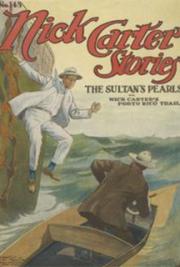FOOTNOTE:
[1] The Great White Hand (Baṛā Safed Hāth), a saying current in India to describe the power of the English.
[2] The incident here related actually occurred.
[3] Nana Sahib was first referred to as “The Tiger of Cawnpore” by the Times.
[4] This is no exaggerated description. The room was exactly as described.
[5] When the Hindoos wish to express a thorough loathing and contempt for anything, they spit upon the ground, and make a peculiar movement with the lips. During the mutiny, and for long afterwards, it was common for the native servants in the European houses, when ordered to do anything, to spit upon the ground when they thought their masters were not looking. The language put into the mouth of Wanna, and the ferocity depicted, are by no means an exaggeration. In fact, words would almost fail to accurately express the inhuman hatred for the English, which the natives—men and women—took every opportunity of displaying during the revolt.
[6] It is needless perhaps to remind the reader that Nana Sahib, the Tiger of Cawnpore, was never captured, nor is it known how he met his end. It is supposed that he fled into the vast and miasmatic jungle, known as the Terai, where, deserted by his followers, broken-hearted and despised, he died a miserable death.
[7] The story of how Hodson shot the King’s sons is too well known to need repetition here. The act has been condemned, but those who are acquainted with the facts know that if the sons had not been shot the mob would have rescued them.







